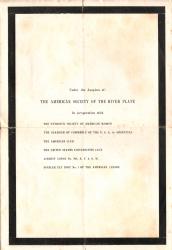Arrival in New York
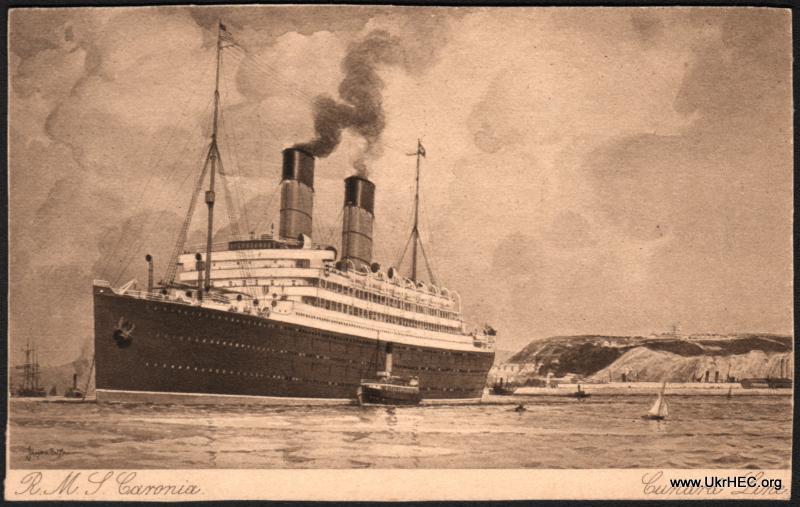
On September 15th, 1922, the members of the recently restructured Ukrainian National Chorus boarded the RMS Caronia of the Cunard Line in Hamburg to begin their Atlantic crossing.
This postcard from the archival collection of Fr. Nicholas Kostetsky is a souvenir of that voyage, and is inscribed on the reverse (in English and Ukrainian): "Hamburg - New York. 15-26 September, 1922. M. Kostets'kyi"
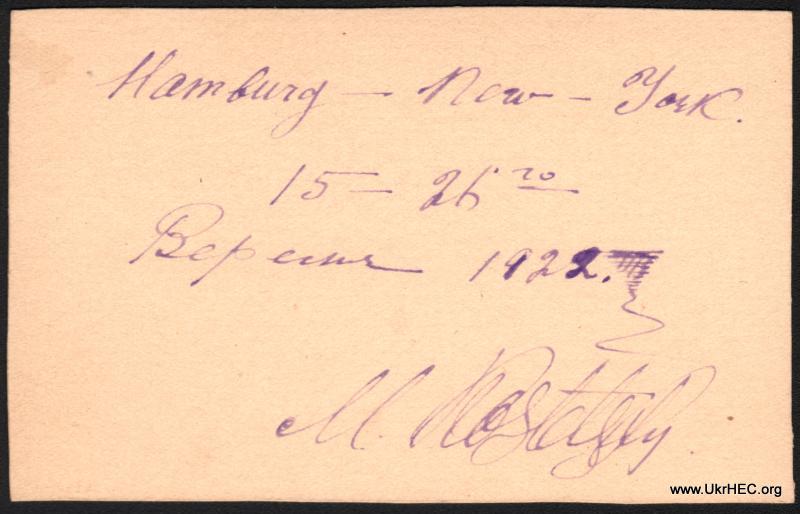
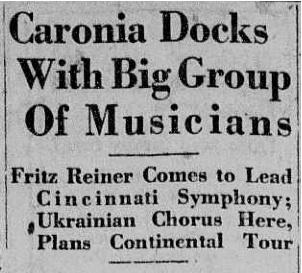
They arrived in New York on September 26, and immediately the Chorus' impressario Max Rabinoff began a publicity operation by getting the New York Tribune to cover their arrival.
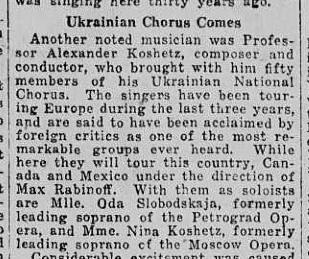
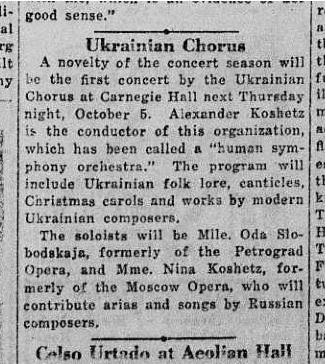
The Tribune also noted their Carnegie Hall debut.
It was at this concert that the Chorus performed Mykola Leontovych's Shchedryk (the music that was to become The Carol of the Bells) for the first time in the US. The work had been comissioned by Koshyts' back in Ukraine, and had been a standard part of the Chorus' repertoire during their European tour.
After a second concert at the Hippodrome on October 15, the Chorus embarked on their United States tour.
Touring the Americas
During 1922-24 the Chorus toured North and South America, performing throughout the US and Canada, as well as in Mexico and Argentina.
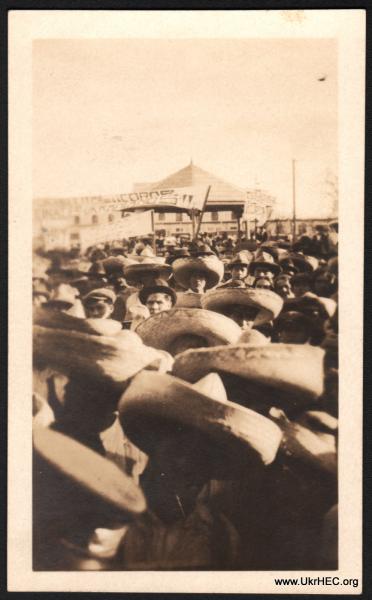
The Chorus perfomed numerous shows in Mexico, including several packed performances at the main arena in Mexico City.

The Chorus made it at least as far west as Kansas City, KS, as can be seen in these newspaper clippings. The article is both amusing and disconcerting in its patronizing tone. The author refers to the "troop of fifty-eight little Russians", all "tempermental and highly excited artists" who "chatter[ed] in a dozen different tongues", carried "weird looking bags", and complained about Mexican coffee.
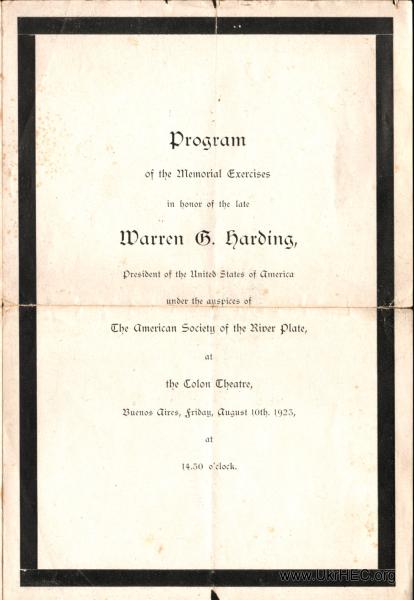
While touring South America, the Chorus gave an unusual performance at the "Memorial Exercises in honor of the late Warren G. Harding" that was put on by American ex-pats in Buenos Aires, Argentina. The Chorus is listed as having sung the American hymn tune "Lead Kindly Light". In addition, they sang two works from their regular repertoire: "Funeral Hymn" was probably some setting of "Memory Eternal", while the work by "Demitzky" (perhaps a misspelling of Porfyrii Demuts'kyi) is harder to identify.
Wilhousky and the "Carol of the Bells"
Among the audience at the first concerts of the Ukrainian National Chorus in New York City was a 20-year-old student at the Damrosch Institute of Musical Arts (which later became the Juilliard School) named Peter Wilhousky (Petro Vil'khovs'kyi). He had been born in Passaic, NJ to a Rusyn family originally from the Presov region of Slovakia. He was intrigued enough by the Leontovych setting of Shchedryk that by the 1930s he had created the now all-too-familiar English lyrics, which he copyrighted.
Why bells? It may have been that the melody and arrangment reminded Wilhousky of bells, or he may have conflated Shchedryk with another carols setting that may have been in the Chorus' repertoire, namely "A v Ierusalymi Dzvony Zadzvonyly" ("O in Jerusalem the Bells Rang Out"), where the choir literally imitates the sound of church bells.
Wilhousky would go on to become an influential choral director and teacher, as well as arranger for Arturo Toscanini's NBC Symphony, and as such had ample opportunity to popularize his new English text.
The rest, as they say, is history.
Where did they end up?
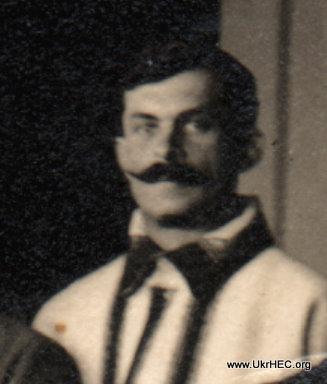
Nicholas Kostetsky, from whose archival collection most of the images in this exhibit were taken, left the Chorus and settled in western Pennsylvania. He worked for many years as the garden caretaker at Elm Court, the mansion of businessman and philanthropist Benjamin D. Phillips in Butler, PA, and at some point was ordained a priest. We know little else about his life. He died in 1971. The Kostetsky materials in our archive were recently donated to us by Lovie Tymkiw and Karen Sheptak of Butler, PA.
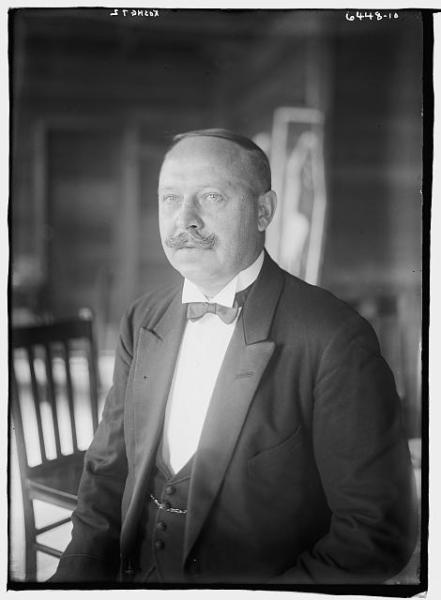
The Ukrainian National Chorus made one final tour of the US and Canada in 1926-27. They then effectively disbanded, not having achieved the commercial success that they arguably deserved. Koshyts' himself settled in New York City, and spent summers in the 1940s in Winnipeg, where he died in 1944. His archival materials are at the Winnipeg Oseredok.


